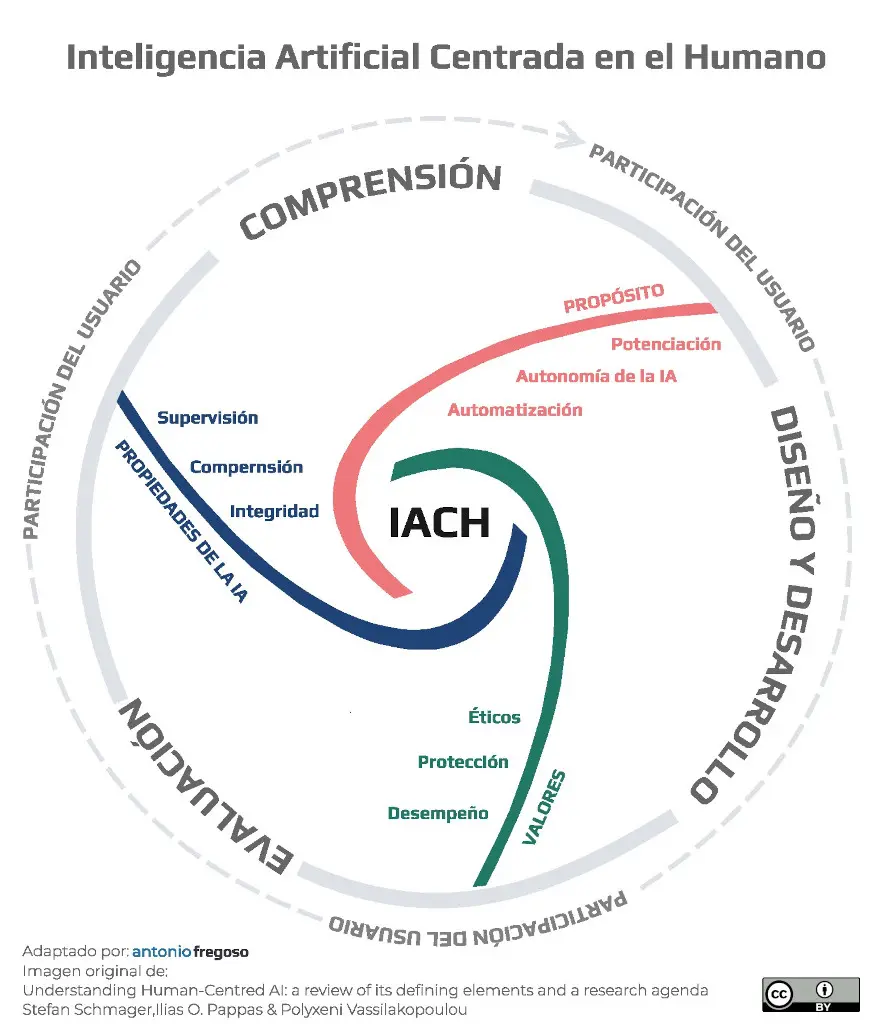Creating technology, by humans, alongside humans, and with the ultimate goal of its utility, is nothing new. Enhancing human capabilities with the help of technology while ensuring adequate levels of automation, oversight, and decision-making are topics that have long been studied. AI is currently advancing at an astonishing speed, so it is essential to have a conceptual framework that allows us to understand, define, plan, implement, and monitor human-centered intelligent systems..
But what is human-centered artificial intelligence (HCAI)? Researchers Stefan Schmager, Ilias O. Pappas, and Polyxeni Vassilakopoulou from the Department of Information Systems, University of Agder, Kristiansand, Norway, propose the following definition:
Human-Centered AI (HCAI) focuses on understanding the purposes, human values, and desired properties of AI in the creation of AI systems by applying Human-Centered Design practices. HCAI seeks to augment human capabilities while maintaining human control over AI systems, considering the system's need, context, and ethical and legal conditions, and promoting individual and societal well-being.
Clearly, there is a great responsibility involved in developing intelligent systems, whether in the business, social, political, or cultural context. Therefore, in addition to the technological and operational foundations, an axiological approach is required that aligns the system with human values. The proposed model is as follows:

Purpose
- Augmentation: The main objective of augmentation lies in the idea of using AI technology to enhance human capabilities, rather than replace or diminish them.
- Autonomy: The ability of an AI system to make decisions and perform actions without direct human intervention or control.
- Automation: Automation refers to the outsourcing of repetitive, routine, or time-consuming tasks that AI systems can perform more efficiently.
Values
- Ethicists: Ethics must be pragmatic, and the ethicist must consider themselves as designers in the technology development process, embracing a pragmatic view of ethics to incorporate ethics into research and artifact design.
- Protection: Protection values such as Privacy, Security and Harm Prevention refer to the respect for fundamental human rights, the protection of physical and mental health, as well as the protection of the environment.
- Performance: One of the most obvious and notable strengths of AI technology is improved performance, whether through augmentation of human capabilities, autonomous action, or automation.
Properties of AI
- Oversight: In the context of IACH, these relate to the monitoring, review, and regulation of IACH systems and their impact. Through oversight, the design and development of IACH systems can foster trust and a beneficial impact.
- Comprehension: These properties share the goal of supporting and improving human understanding, decision-making, and control over AI systems.
- Integrity: These properties ensure that IACH systems operate consistently, reliably, and dependably. They address technical and structural soundness, as well as the development of trustworthiness by providing auditability functions to review alignment and compliance with human and societal objectives.
Understanding
Understanding the properties of AI and aligning them with its intended purpose is critical. Understanding it allows us to know what's possible and what limits exist, whether technical or budgetary.
Design and Development
In the design and development phase, the goal is to align purposes with values. The objective of this phase is based on accountability, performance, and effectiveness.
Evaluation
Is it possible for AI to act with the desired values based on its properties? Evaluation allows for the detection of deviations, errors, hallucinations, or inappropriate behavior in AI systems.
User Participation
Since AI is a human-developed artifact, it is critical for humans to take into account the processes, methods, and tools of Human-Centered Design.
Iterative Process
Human-Centered Artificial Intelligence (HCAI) is an iterative process. Each cycle allows for flaws to be detected and improved. It is a continuous process that allows for improved application, whether in culture, business, the market, medicine, politics, or warfare.
References
- Understanding Human-Centred AI: a review of its defining elements and a research agenda. (2024). Behaviour & Information Technology. [online] doi: https://www.tandfonline.com/doi/full/10.1080/0144929X.2024.2448719..

